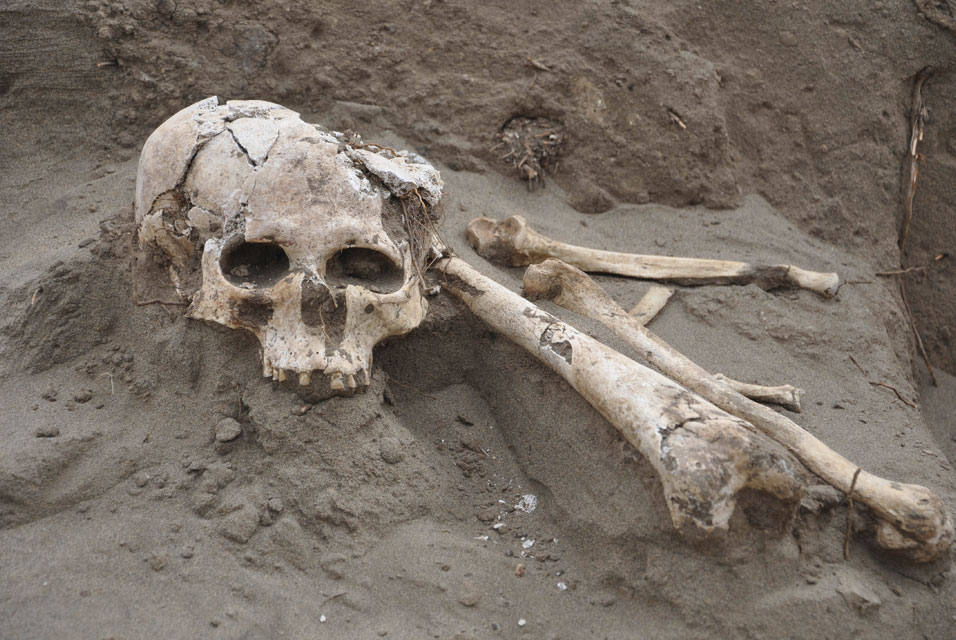Archaeologists excavating the thousand-year-old temple complex of Chotuna Chornancap in Lambayeque, northern Peru, have discovered the tomb of an important lord thought to have been an executioner. The tomb was found two weeks ago and contained human remains, ceremonial knives, ceramic pots, a dress made from native cotton and a series of rolled copper discs. It’s the grave goods that mark the burial as belonging to someone with a key ceremonial role in Lambayeque human sacrifice rituals.
Carlos Wester, director of the Bruning Museum in Lambayeque and one of the tomb’s discoverers. Wester told AFP the person buried there was most likely in charge of human sacrifice.
“We found the perfectly preserved tomb of a sacrificer of the Lambayeque culture, with copper machetes and human offerings laid around them,” Wester told the news agency. […]
The 20 to 30 year old resident of the tomb “played an important role in the ceremonies of human sacrifice” for the ancient culture, which flourished from 700 to 1375 AD. Sicán or Lambayeque culture emerged around the eighth century, lasted until 1375 and peaked between 900 and 1100.
The adobe pyramids, temples and tombs were built by the Lambayeque culture around 900 A.D., but they remained in use by later cultures until the arrival of the Spanish. The temple complex was discovered in January of 2010, but even before that the Chotuna Chornancap archaeological site produced copious evidence of extensive Lambayeque and Inca human sacrifice.
In September of 2008, archaeologists discovered two Lambayeque tombs that contained the remains of seven sacrificed women between the ages of 15 and 25, as well as several sacrificed llamas. All of the skeletons showed signs of having been cut at the throat, and one of the women was pregnant. Sacrificing pregnant women was not a common occurence. It’s an extremely rare find, in fact, and indicates that an important religious ritual took place, perhaps the death of an important personage or the sanctification of a newly built temple.
Just a few months later archaeologists found a large Inca sacrificial pit containing 33 bodies, this time dating to approximately 600 years ago, just before the Spanish conquest.
